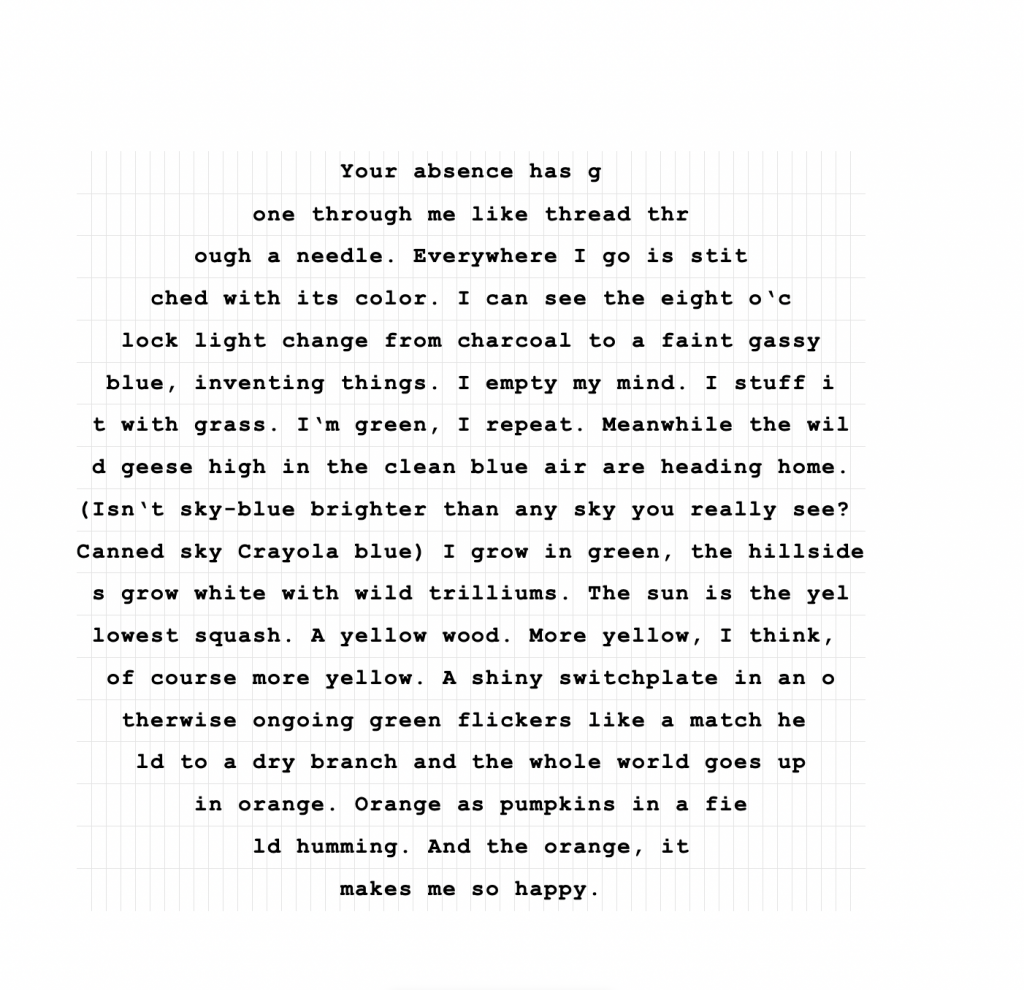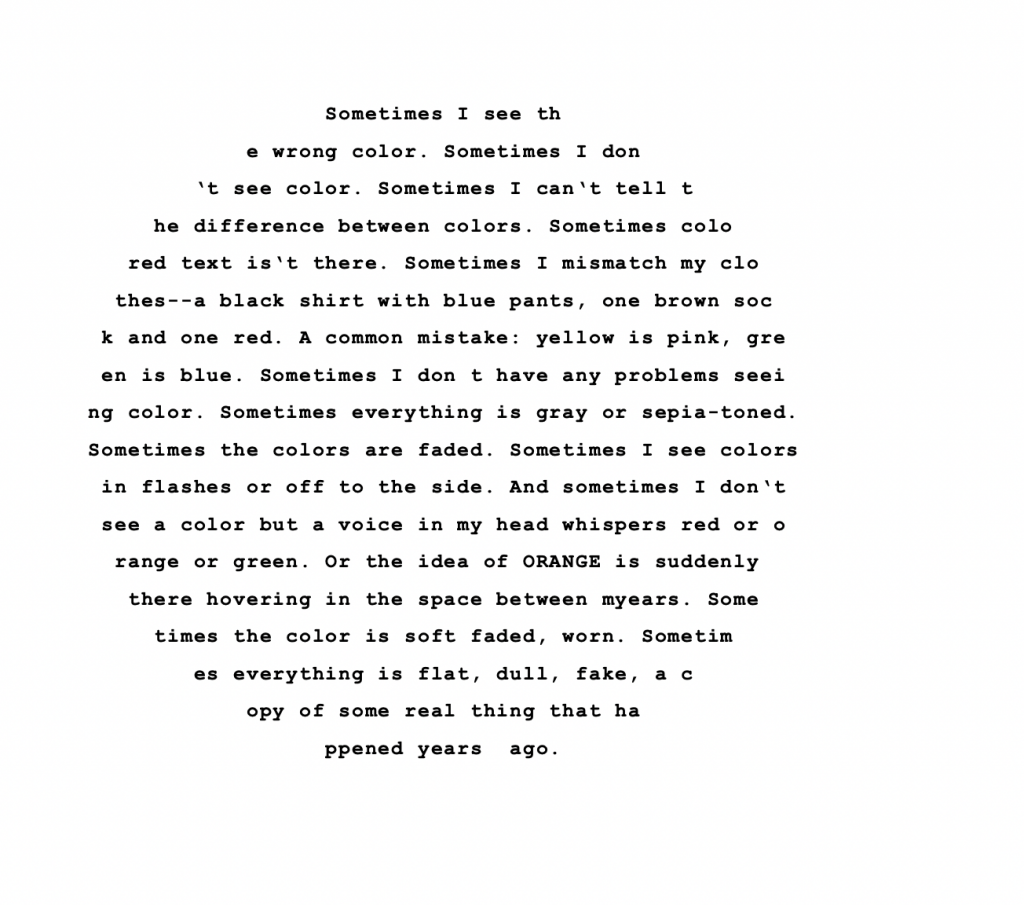bike: 12 minute warm-up
run: 3.25 miles
basement
outside temp: -6 / feels like -25
Dangerously cold today, or as the winter storm warning described it, life-threatening. Yikes. In order to chip away at those last miles I need to reach my goal of 1000 miles, I ran on the treadmill.
current total (after this run): 991.95
Warmed up (because it was cold in the basement!) on the bike first, while watching Erin Azar (Mrs. Space Cadet) and her latest “uncomfy” challenge. A self-proclaimed struggle runner and content creator, Azar is completing (and filming) a bunch of things that make her feel uncomfortable. This one was working out with a college lacrosse team. I like her and I enjoyed this video, partly for her perspective, partly for the positive energy of the college athletes, and partly for the speed drills. Some useful stuff in there, I think.
After the bike warm-up, I ran for 31 minutes. Decided to try listening to my latest audiobook, a story collection about an elderly woman in Sweden who likes to solve her problems with murder: An Elderly Lady is Up to No Good. I really like stories with smart, capable, thriving (not always physically, but in terms of their perspective that when you get old you’re not just waiting for death to come) older women. I also like that it’s a story collection — as opposed to a ridiculously long novel — and that it’s translated from Swedish. I covered the display panel on the treadmill with a towel, didn’t look at my watch, and ran while listening to Maud (the old lady) murder a terrible gold digger and a selfish, needy sister. Wow. I lost track of time and was surprised when I gave in and looked at my watch and saw that 26 minutes had gone by. I struggle to run for a long time on a too steady treadmill in a boring basement. Listening to this book helped.
Earlier today, I continued reading Maggie Nelson’s Bluets. Here’s #51:
51. You might as well act as if objects had the colors, the Encyclopedia says.—Well, it is as you please. But what would it look like to act otherwise?
Bluets/ Maggie Nelson
I wrote this in reaction (as opposed to a thought out response) to the idea of acting otherwise: What would this look like for me? I am not acting as if they had no colors, nor do I need to. I can still see colors. My world is not black and white or even gray. The colors just work differently, unreliably. Colors speak in a language that is sometimes silent for me. Color-coded, color as signal, sign. Color to get your attention to communicate something more quickly than a word could do. Color as a practical language. I’ve lost, am losing the ability to USE color as an efficient/effective/persuasive form of communication. Or — to be used by it. Some of this is good, but some of it prevents me from receiving important messages: mold on food, danger in the road, stay away, stop.
Back to Nelson and Bluets. I’m struck by how she cites and uses other writers/thinkers/poets in this book. The first book I read by Nelson was a more recent one, The Argonauts, way back in 2015. The citation is different in this book, but it’s worth mentioning:
Perhaps the biggest thing that has struck me so far is Nelson’s way of citing her sources. When she’s using someone else’s theory or idea, she puts that theorist’s name in the margin, beside her own text. Sometimes she directly quotes the theorist, sometimes she merely invokes them.
story log entry / 6 dec 2015
Here are 2 examples from Bluets:
12. And please don’t talk to me about “things as they are” being changed upon any “blue guitar.” What can be changed upon a blue guitar is not of interest here.
I wasn’t what she meant here, but when I googled “blue guitar things as they are” I easily found the reference: Wallace Stevens, “The Man with the Blue Guitar”
107. Many people do not think the writing of Gertrude Stein “means” anything. Perhaps it does not. But when my students complain that they want to throw Tender Buttons across the room, I try to explain to them that in it Stein is dealing with a matter of pressing concern. Stein is worried about hurt colors, I tell them. “A spectacle and nothing strange a single hurt color and an arrangement in a system to pointing,” I read aloud, scanning the room for a face that also shows signs of being worried about hurt colors.
This reference, which involves the invoking of a line, a direct quotation, and a story about her students. It led me to Stein’s poem: A Carafe, that is a Blind Glass and a helpful explanation: The Difference is Spreading: On Gertrude Stein
What to make of this, or why am I mentioning it? I’d like to play more with how I cite my references in my color poems. I also like the idea of the various bits of information/passages/lines of poetry I’ve acquired being much of the substance of my poem.

